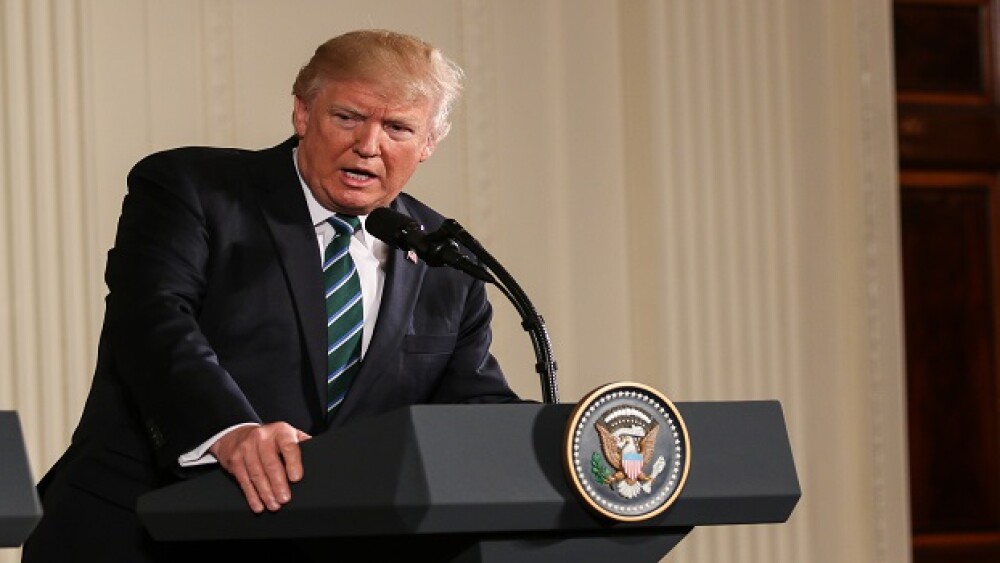The Senate passed the bill on October 3 in a 98 to 1 vote. The House passed its version a week earlier in a vote of 393 to 8. The legislation includes provisions to promote research into new pain management drugs and expands access to substance abuse treatment for Medicaid patients.
Nicole S Glass / Shutterstock.com
President Donald Trump will be signing the STOP Act today, a sweeping bill designed to slow the opioid epidemic.
The Senate passed the bill on October 3 in a 98 to 1 vote. The House passed its version a week earlier in a vote of 393 to 8. Senator Lamar Alexander (R-Tennessee), chairman of the Senate health committee and lead sponsor of the bill, stated at its Senate passing, that it “represents the work of eight committees in the House and five committees in the Senate who have worked together to reach consensus about how to help address the opioid crisis which is affecting virtually every American community.”
The legislation includes provisions to promote research into new pain management drugs and expands access to substance abuse treatment for Medicaid patients.
In 2016, according to the Centers for Disease Control and Prevention (CDC), more than 63,600 people died from overdoses in the U.S., with 42,249 involving opioids.
CNN notes, “The measure also requires the U.S. Postal Service to screen packages for deadly fentanyl from overseas; aims to prevent ‘doctor-shopping’ by improving state prescription drug monitoring; and helps pregnant mothers struggling with addiction and their babies who go through opioid withdrawal.”
In 2017, the Trump Administration declared the opioid crisis a public health emergency. This created priorities and directed Department of Health and Human Services funds at the problem. Congress allotted more than $8 billion for the opioid crisis in this year’s budget.
Despite that, many experts feel it’s not nearly enough. Andrew Kolodny, co-director of the Opioid Policy Research Collaborative at Brandeis University, told CNN in March that the U.S. needed to cut the number of new addicts every year and the treatments should be more readily available for people already addicted.
“We need to make treatment much easier to get than pain killers, heroin or fentanyl,” he said. “You want somebody who is opioid-addicted to be able to walk into a treatment center and be able to start treatment that same day.”
Kolodny suggested $60 billion over 10 years would be a better goal.
President Trump had focused on a three-part plan. It would include reducing demand through education, cutting off the flow of illicit drugs, and expanding opportunities for evidence-based addiction treatment.
He also proposed seeking the death penalty for drug traffickers. “This isn’t about being nice anymore,” Trump said at a New Hampshire rally earlier this year. “These are terrible people, and we have to get tough on those people. We can have all the blue-ribbon committees we want. But if we don’t get tough on the drug dealers, we’re wasting our time.”
Although the common narrative is that the opioid epidemic is caused by misuse of prescription opioids, Sally Satel, an addiction psychiatrist and lecturer at the Yale University School Of Medicine, wrote an article in February in Politico Magazine analyzing numerous surveys and studies that show “that only a minority of people who are prescribed opioids for pain become addicted to them, and those who do become addicted and who die from painkiller overdoses tend to obtain these medications from sources other than their own physicians.”
The overwhelming number of overdoses are related to illegal fentanyl and heroin, dubbed “street opioids.”
In response to today’s signing, Lynn Webster, the vice president of PRA Health Sciences and past president of the American Academy of Pain Medicine, stated, “The recent opioid legislation that passed has the potential to make a small difference, but its potential effectiveness will depend on how the legislation is implemented. I think it is premature to celebrate victory when we experienced a record number of 72,000 drug-related deaths last year.”





